Organization of lighting in the hallway
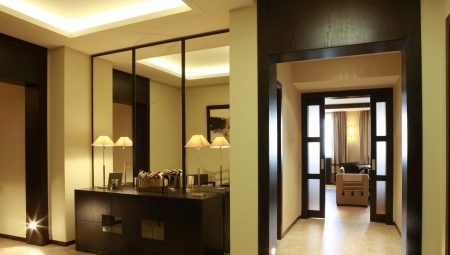
Many hallways of city apartments have no windows at all. Daylight only partially penetrates here through the open doors of the rooms and the kitchen. This moment has to be compensated for with the help of a well thought out instrumentation system. At the same time, light sources should not be annoying. On the contrary, they should gently, but fully illuminate all corners of the room, emphasizing its dignity and design. This article will tell you about the features of organizing the lighting of the corridor, the types of devices and the nuances of their choice.
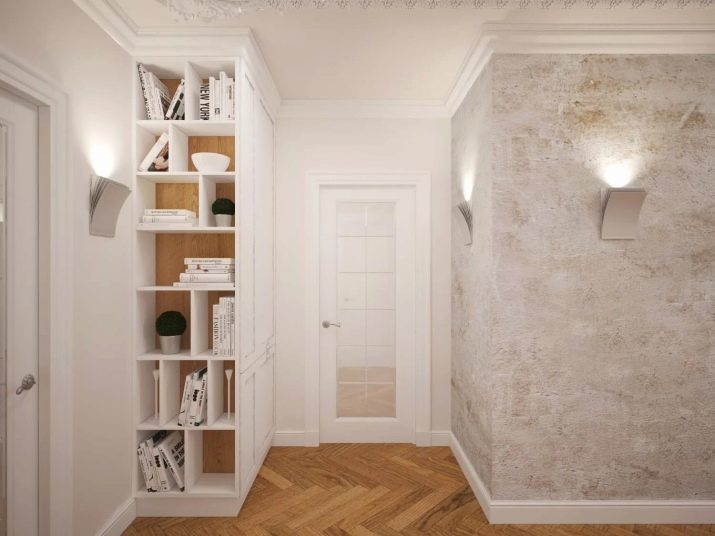
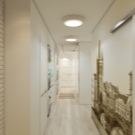
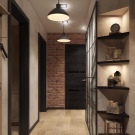
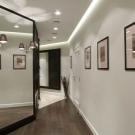
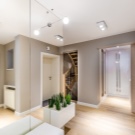
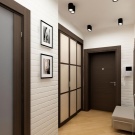
Primary requirements
Thinking over the lighting system in the hallway, it is important to consider several points. This will help you choose the right artificial light sources and position them correctly. Then the room will be bright and cozy, and you will be pleased to return home.
- Optimal brightness. The lighting should not be weak. In this case, it will be difficult to tie your shoelaces, search for something in your bag, or even examine yourself in the mirror before leaving the house.
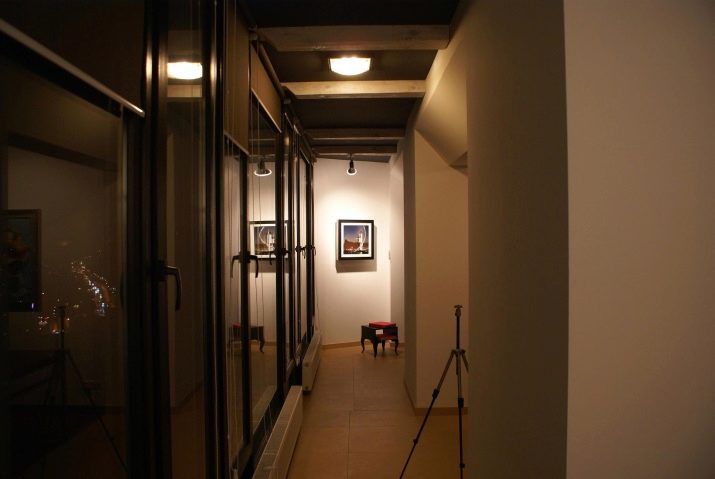
However, too bright light is also useless. So the defects in finishing and layout flaws (if any) will be striking.
In addition, when entering an apartment from a semi-dark entrance, you will feel an unpleasant pain in your eyes due to the brightness. The best option is diffused lighting. This effect can be achieved with matte shades and some tricks for placing appliances. For example, you can direct them not down, but up. This will bounce the light off the ceiling and gently diffuse around.
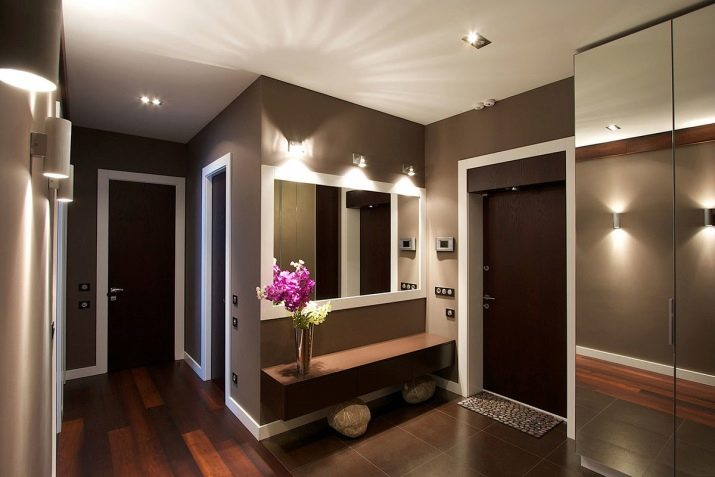
- Light unity. The illumination of the hallway and other places in the house (rooms, kitchen, bathroom) must be maintained at the same level.Moving around the apartment, you will feel yourself in a single harmonious space. In order for this condition to be observed at any time of the day, several lighting fixtures are usually purchased for the hallway.
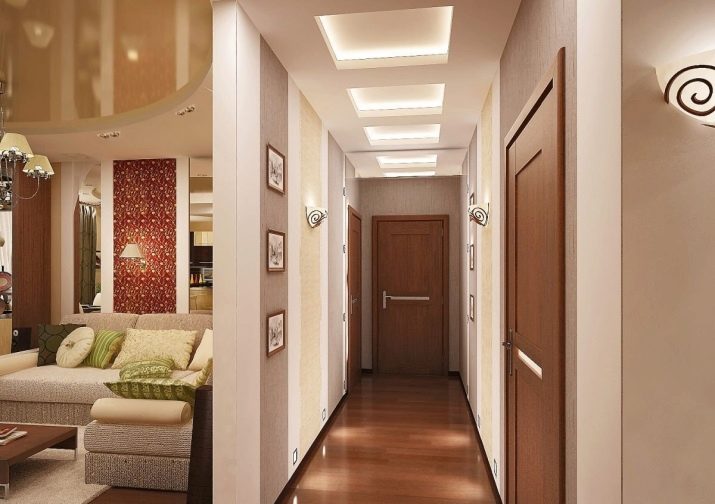
- Right size. If you want to hang a lamp with a hanging shade or decorative elements in the hallway, pay attention to the height of the ceiling. A person should not reach the object with his hand. Otherwise, anyone can accidentally hit and damage him while dressing. The same goes for wall sconces - they shouldn't get in the way.
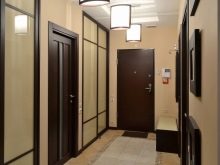
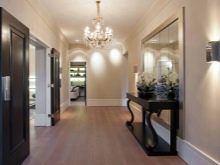
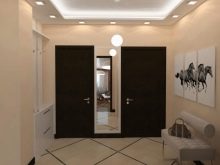
- Possibility of zoning. Even if the corridor is not very large, it will be good to place several different light sources in it. This way, you can only turn on the appliances in the desired area, creating optimal lighting.
For example, you can highlight the entrance area with light so that it is convenient to put on shoes and button up clothes.
You can illuminate the doors to the room, a place near the closet, mirrors, etc. It is advisable to make several switches in the spacious hall. This will allow you to quickly illuminate the space no matter from which part of the apartment you get into the hallway.
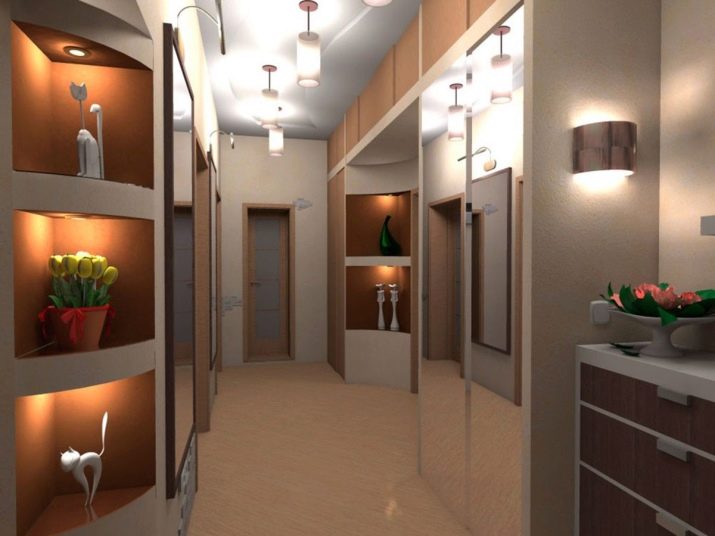
- Compliance with the style of the environment. Do not forget about the appearance of the devices. The classics are characterized by crystal or glass graceful chandeliers and sconces. Loft assumes brutal lamps in metal shades. In rooms decorated in a minimalist style, built-in point and flat ceiling models are usually used. Modern gives room for imagination and allows for a variety of original options. When choosing a product design, both the decoration of the room and the furniture in it are taken into account.
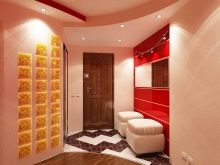
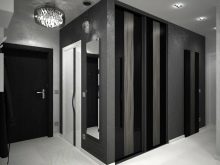

Lighting types
There are three main types of lighting for this room.
- General. This is one or more devices that are responsible for lighting the entire space. The switch for them is usually located at the entrance to the apartment.
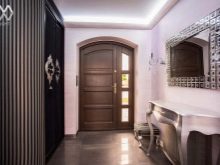

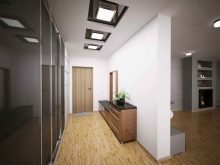
- Local. This is the allocation of specific areas.
During the day, such devices can be turned on separately from the general light source, for example, to look in the mirror or to clean up the closet.
In the dark, they complement the main device, increasing the intensity of illumination in a certain area, if necessary.
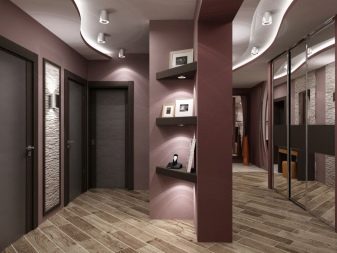
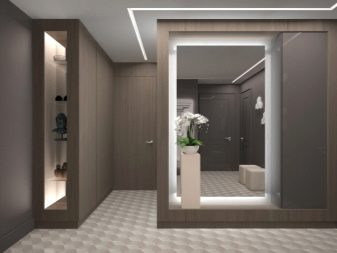
- Decorative. These are devices that perform the function of decorating the hallway. Also, these are design techniques that allow you to favorably emphasize individual elements of the decor or visually expand the space.
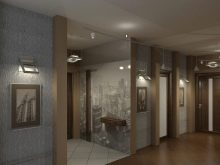

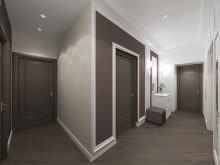
All three types are not always used together. The choice depends on the characteristics of a particular room, its shape, interior. Let's consider the options for lighting devices in more detail.
Choice of lighting fixtures
The main
General lighting fixtures form the basis of the whole system in spacious halls. If the corridor is very small, you can limit yourself to only them. The choice of options is wide.
- A central chandelier or lamp with multiple shades. Such devices are located under the ceiling in the center of the room. They look good. However, if the hallway is of medium or large size, an addition in the form of highlighting local zones is necessary.

- Spot. This is a device consisting of several lamps mounted on a rail.
Due to the size and structural features, such a device can independently cope with providing a small room with a sufficient amount of light.
The device also has the advantage that the position of the shades can be changed at will. Thus, you will be able to direct light fluxes to specific places, achieving the desired result.

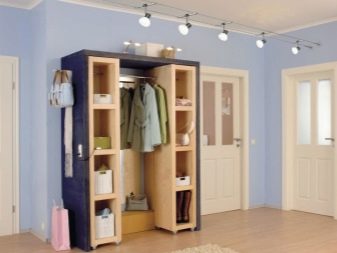
- Spotlights. They are often used to complement the main chandelier. However, if the design is minimalistic, you can limit yourself to only such devices, placing them around the entire perimeter. It should be noted that this solution can only be carried out when installing a stretch or false ceiling.
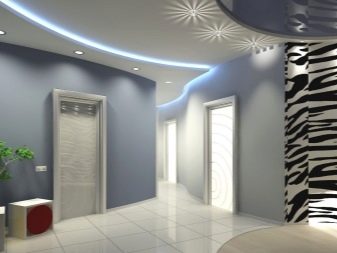
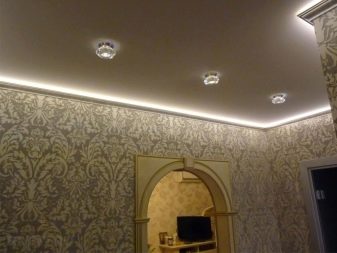
- Sconce. These are wall-mounted models that usually complement ceiling-mounted light sources.
But if the room is small, you can use them as the main ones, thus realizing the design idea.
In this case, two devices are not limited. They are mounted at a height of 2 meters (not lower). Due to this, the light is evenly scattered, and the devices themselves do not interfere with people to move freely.
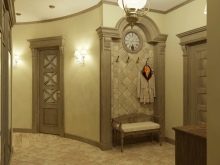
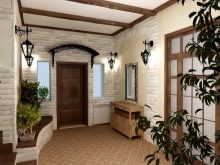
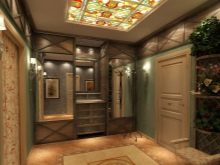
Local
Lighting for specific areas makes the entryway more comfortable. Additional light is needed in places near the mirror, closet or shoe cabinet. Shelves, especially if they are in niches, are also desirable to highlight.
When ordering a wardrobe, they usually immediately provide for a system of lamps built into the model's case. Most often they are located in the visor of the product, less often in the walls.
You can make the light turn on automatically when you open the door. As for the mirror, the illumination can be mounted on the wall in the form of a sconce (on top or on the sides of the object). You can also purchase a model with a luminous frame.
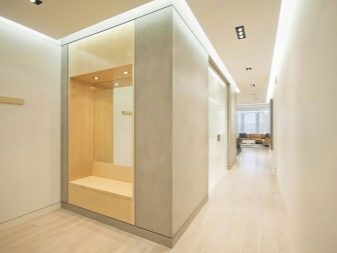
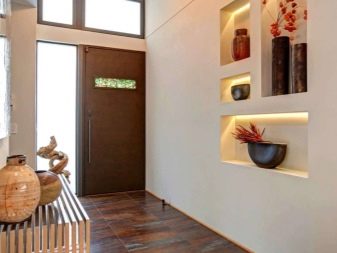
Decorative
This lighting is optional. However, with its presence, spectacular accents, a bewitching play of light and shadow, and the versatility of the interior appear. If the room is decorated with paintings or framed photos, they can be distinguished. Spotlights or sconces can help with this. You can also illuminate niches with decorative elements, arches.
An illuminated stained glass window will look great in a classic interior. It can be positioned on a wall or ceiling, and the backlight can be mounted on the back. Such a technique will not only decorate the hallway, but also create the illusion of penetration into the sunlight.
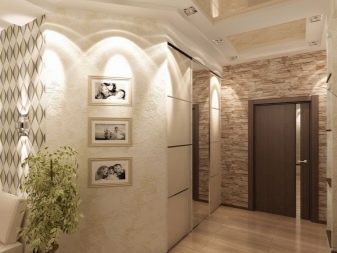
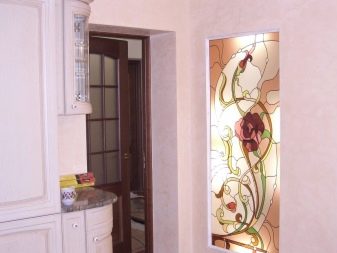
Of course, one cannot fail to mention the LED strip, which is often used to decorate modern interiors.
This option is convenient because it allows you to create light stripes of any length and shape, including rounded shapes and closed paths. In this case, the tape can not only emit cold white or warm yellow light. It can be colored, which allows you to implement the most unusual projects. The light can be made both bright and directional, and soft, diffused. In the latter case, the tape just needs to be placed in a special aluminum profile.


There are several options for installing an LED strip.
- Along the perimeter of the ceiling. In this case, the backlight visually erases the boundaries, creating the effect of airiness of space.
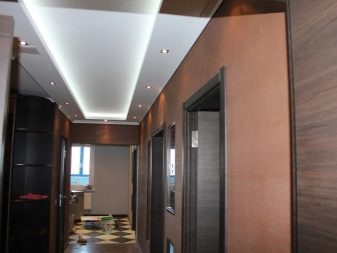
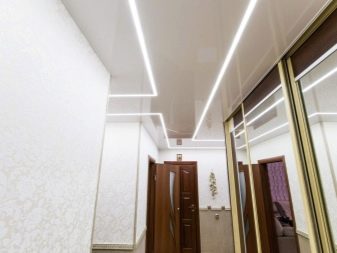
- Along the contour of the floor. If there is little furniture in the hallway, this option will look very impressive. For over-floor lighting, special skirting boards are used. The tape is inserted into a recess, which is then covered with a transparent strip. The practical benefits of this technique can be seen at night. Soft light will allow you to safely move along the corridor without turning on the main lamp. Also, the glowing tape allows you to highlight irregularities in surfaces, if any (for example, steps).
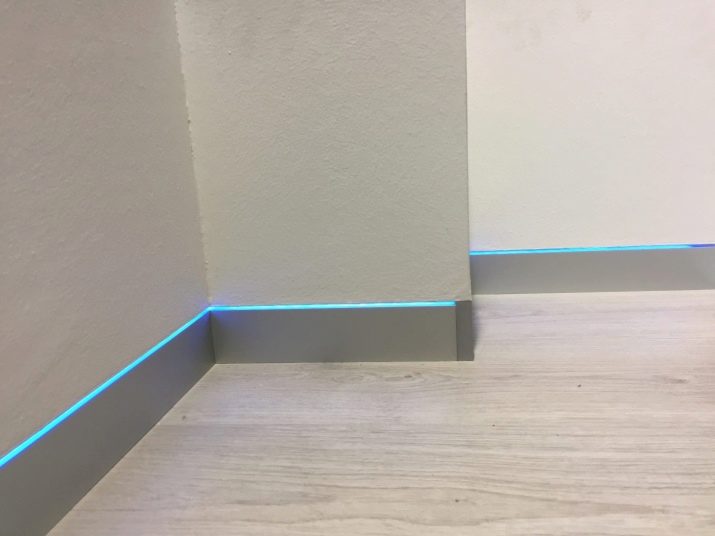
- In the doorway, arch. This technique allows you to effectively highlight the doors, as if inviting to enter. The arch in this design will look very solemn.
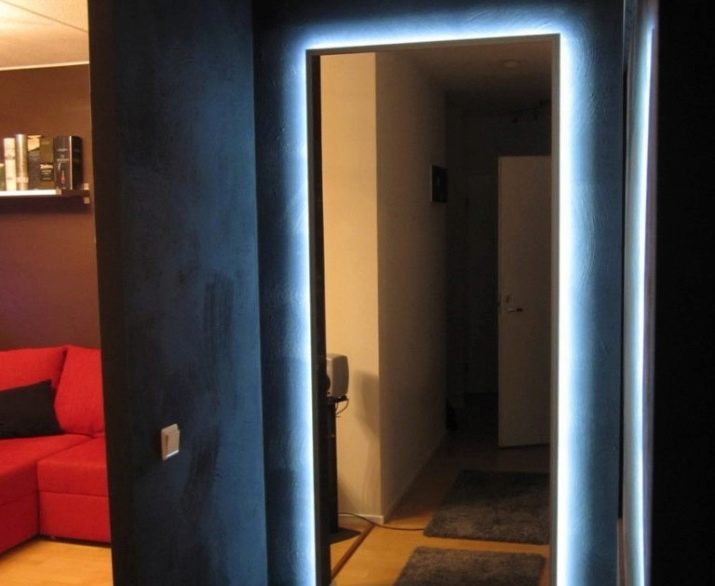
- In niches. Highlighting niches and shelves will not only make it easy to see what is on them, but also make the space more voluminous.
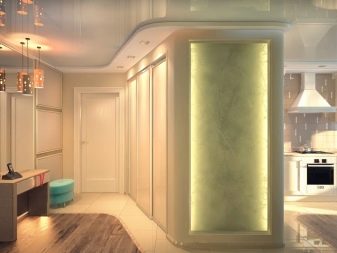

- Inside the furniture. Even if there is a backlight on the top of the cabinet, the inside of it is not sufficiently illuminated. This is especially true for the lower shelves. Installing the tape will make it easy to find the item you are looking for. This will also illuminate the shoe cabinet.
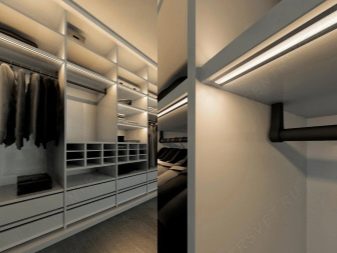

Choosing the degree of brightness, you need to focus on the purpose of the tape. To create the effect of light geometry on the ceiling or floor, you can take the option with a large number of diodes and a small pitch.
For the effect of "hover" and blurred borders, soft diffused lighting is necessary.
Openings and doors are also decorated with dim light so that the incoming person is not blinded. As for compatibility with other lighting devices, tape is usually combined with point models.
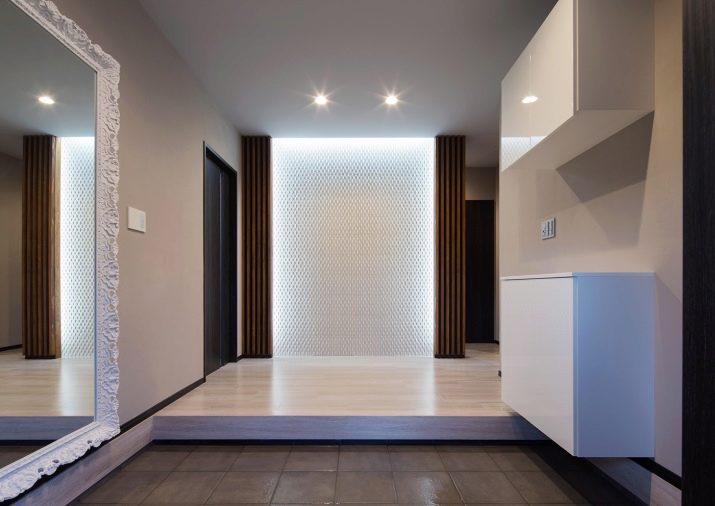
Correct placement
If the hallway is spacious, has a square or rectangular shape, any options for placing the lamps are possible. If the premises are non-standard, a special approach is required here. The lighting scheme should be carefully thought out, because the disadvantages of the layout should, if possible, be turned into advantages.
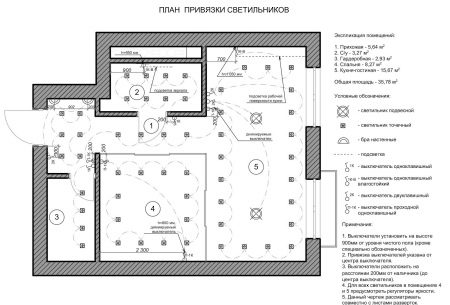
Small room
In poor lighting conditions, a small hallway will seem even more cramped. Therefore, with a small number of devices, it is important to illuminate all zones.
An excellent solution is to use spots. Each structural element can be directed in the desired direction (to the front door, mirror, closet).
Spotlights are also suitable. They can be used independently, or they can be combined with a small chandelier.
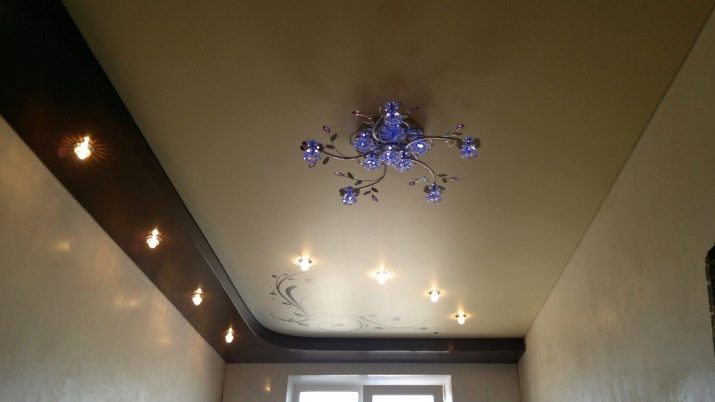
Long room
If the hallway is long and narrow, spotlights are the best choice. They are located from the very front door along the entire length of the room at regular intervals. If the room has very high ceilings, wall lighting can be used. Sconces are mounted on one or both walls, depending on the width of the corridor. And, of course, the large length of the room can be beaten with the help of an LED strip. So in the dark, the corridor will seem like a fantastic place.
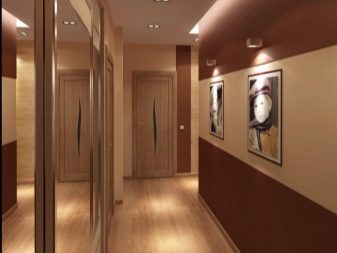

Successful examples in the interior
- The elegance of the classic style is emphasized by sconces with imitation of candlesticks and a delicate chandelier.
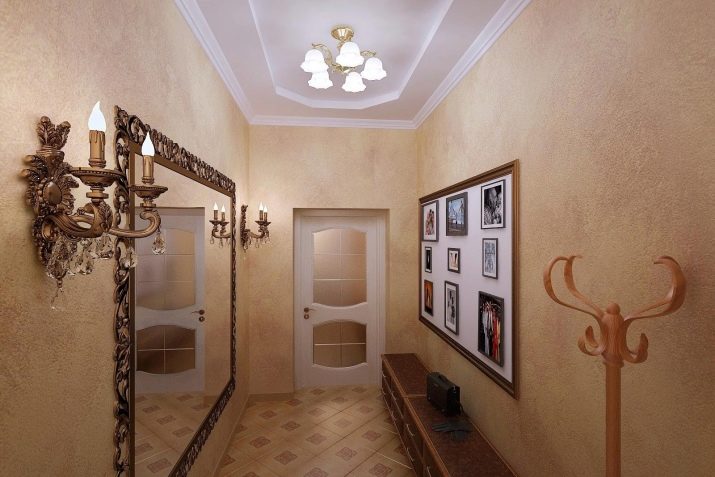
- Modest sconces in combination with spotlights look good in modern interiors.

- The original design of the entrance door area with wall fixtures is complemented by a ceiling LED strip.
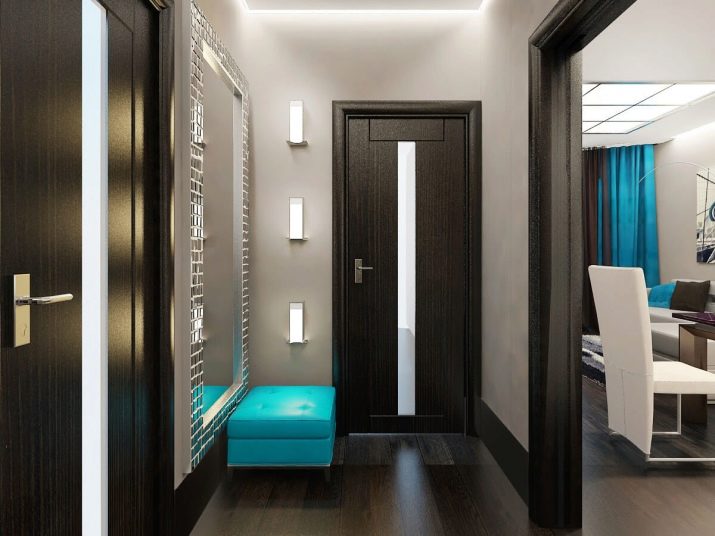
- The all-round illumination of a large mirror is a great design move.
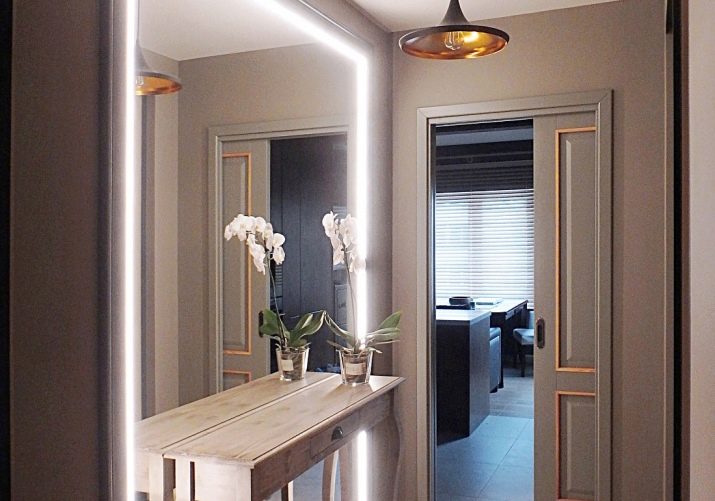
- Chandelier, wall sconce and spotlights look good together due to the laconic design.
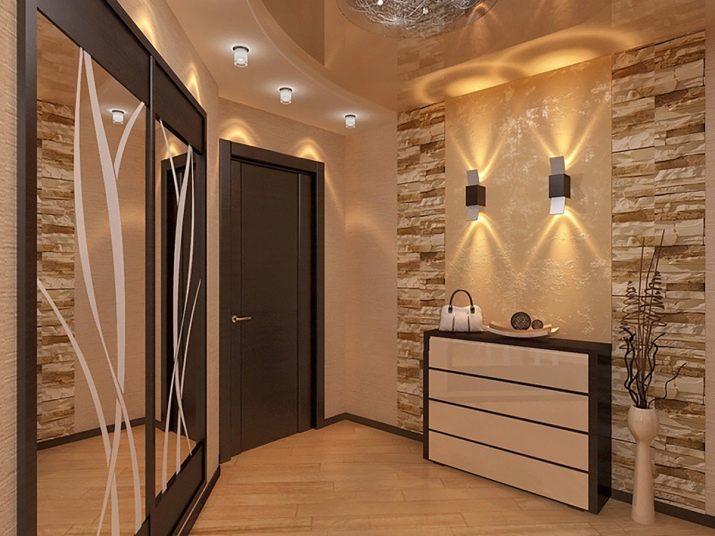
How to choose lighting for the hallway, see below.





